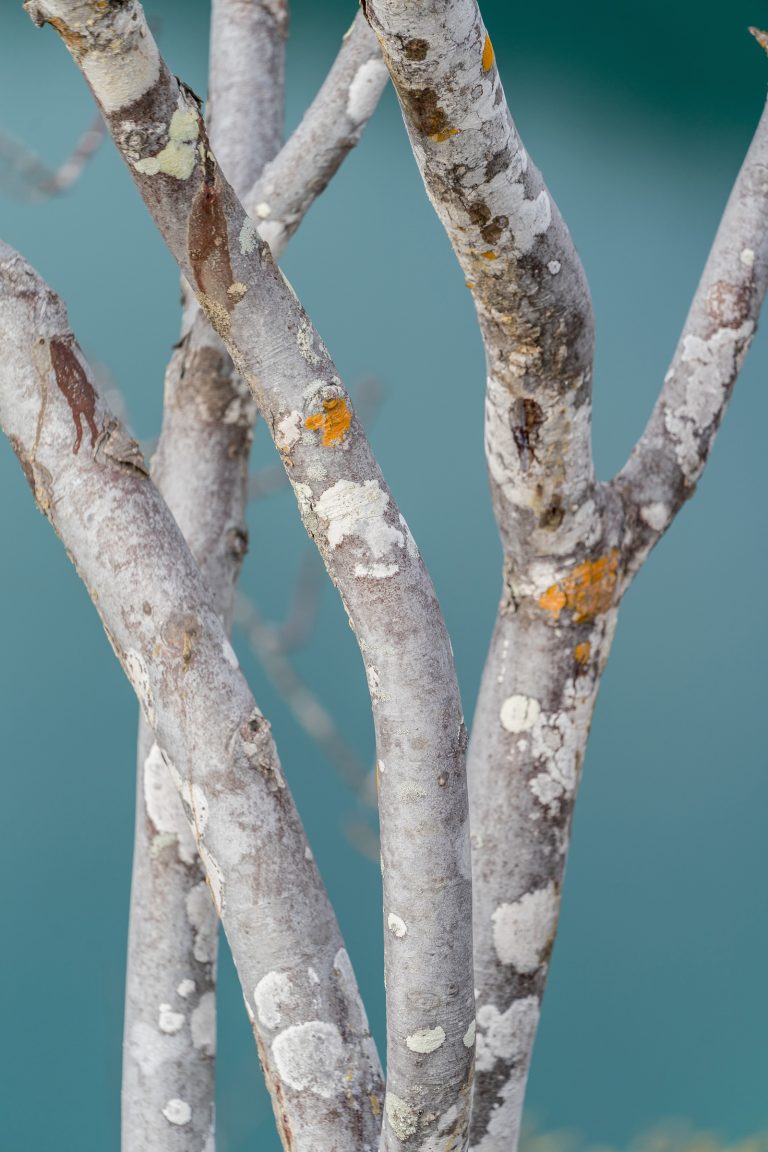
about tropicl wood
Concerns have been raised against the use of these tropical wood types. We are also critical and purchase those materials from stocks which have been controlled by government. As to our woods, here the most important facts: • Holz & Stein is an officially recognized and authorized company of tropical wood by the Federal Agency for Nature Conservation. Our stocks have been controlled and confirmed as legal sources. • Our company is registered under no. 6372 at Bundesamt für Naturschutz (BfN.de). • Further, it is to be stated that our manufacture uses offcuts. • The instrument sector is part of the Federal VDH Association and thus works exclusively in accordance with the principle of sustainable forestry, which is also applied to our German forests. The VDH Association only awards tree-felling licenses pursuant to strict guide-lines. These include an ecological usage plan, a forest-preserving felling method and a careful organisation of the transportation of the timber from the felling location.
As an alternative or supplement to tropical woods, we offer European olive wood and pear wood.
kingwood
Kingwood belongs to the same category as all types of rosewood and is coloured like cocoa with linear grain. The tree grows to c. 10 m in height and with a density of c. 1.15 is even harder than rosewood. It also grows in Brazil. The name “kingwood” allegedly derives from an old privilege of the tribal kings, who were the only ones permitted to trade in this wood.
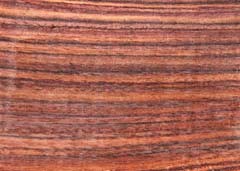

ebony
Everybody knows the black ebony from the fairy tale Snow White. It can be found in Africa and East-India. The most beautiful and precious ebony comes from Africa. There it already grows painted jet black what is an absolute rarity beneath woods. Ebony can become 30 metres high and does not have any visible annual rings. Rarely there is any wood that is harder. That is the reason why the handling is very complex.
rosewood (only within the EU)
Rosewood does not come from our rosebushes, as some people think, but rather is a deciduous sub-tropical tree which pro-duces a rose-like scent when the wood is cut. We use only the original Bahia rosewood from Brazil with the red coloration. Often, wood which is called “rosewood” is not always actually rosewood, but rather is often a dark-brown Indian rosewood (= palisander), which is from the same family. Common English usage of this term encompasses a much larger number of wood types, which easily leads to confusion. The trees grow up to 10 m high. At a density of 1.1, it is a very hard musical instrument wood. The fiber structure is longer, which makes it more flexible as compared to other woods with the same density. The colors will mainly cover a range from light to dark red. Even cream is possible in the transition from heartwood to sapwood, which is even attractive and popular. Because of this beautiful play of colors and the very lively texture there are a lot of followers.
Rosewood is listed on the Cites list to protect endangered plants and animals. It is difficult to procure at a scarcity price. So we only manufacture it in small limited quantities. Because of the high requirements of the Federal Agency for Nature Conservation when exporting to third countries and the high export fees, we only supply it within the European Union.


pear wood
This timber is growing in the border triangle France-Switzerland-Germany.
This precious European hardwood is characterized by a very fine, evenly color and has an almost non-porous surface structure with a specific weight of approximately 0.75. The very nice warm color from skin colored to rose-brown is the result of the steaming process.
Pear wood is an European instrument wood mainly processed for flutes. But it is even be used for wainscoting or interior design and furniture constructions.
olive wood
This European olive wood is growing in Mediterranean countries, with priority in Italy, France, Greece and Spain. Olive trees grow very slowly and can attain 33 feet and more. With its fine pore structure and high density of 0.9 to 1.0, this wood is one of the hardest species of Europe. Only boxwood is even harder. The yellow or light greenish-brown wood is often finely veined with a darker tint. A light creamy color is also common. Olive wood is produced for wind instruments, brushes, cutting boards, bowls and other kitchen utensils, fine furniture and decorative items. It is valued by woodworkers. Being very hard with a close-grained fiber structure, it has a very smooth surface and a silky shine after the last grinding.
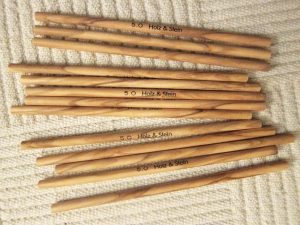
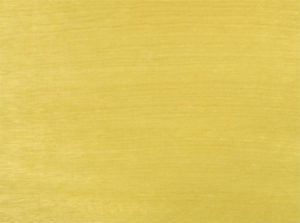
yellowheart
Yellowheart is a common trade name given to several species. It is a commercially important timber in Brazil, where it is widely harvested and used for a variety of purposes. Amarello trees can grow to more than 130 feet tall and 30" in diameter. They are also known as Brazilian boxwood. Its bright yellow color gives it great appeal, which is why it is often referred to as yellowheart. Heartwood color ranges from pale yellow to golden yellow. This beautiful exotic hardwood is considered to be a dense wood with a very tight grain. It has a density of around 1.1 and the texture is usually straight grained and uniform. Amarello is used predominantly for musical instruments, brush backs & handles, dowell pins, knife handles, pens, turnings, flooring and fine furniture.
bloodwood
Bloodwood is a native wood of Brazil, Peru, Venezuela and Panama. The trees can grow to be 33 to 130 feet tall with a diameter of up to 5 feet. This great dark red wood is extremely hard and has a high density of around 1.15 which means that the wood is dense enough to sink in water. The wood is close grained with a tight fine and lustrous texture. Bloodwood is with a fine scent when worked. Bloodwood is used for musical instruments like drum sticks, organ pipes, violin bows, and xylophones. After finally grinding the wood yields a wonderfully lustrous surface due to its fine pore structure. It is smooth as silk and takes a natural glassy finish. Finally it is polished again with pure natural oils and natural wax. All toxic substances, like lacquer or resin, are strictly renounced.
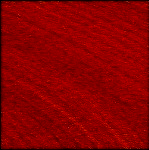

Pink Ivory
This evergreen deciduous tree grows in South Africa. It can be found in open woodland, fields, rocky hillsides and along rivers. Pink Ivory is one of the most precious woods in the world. According to an old legend, the Zulus called pink ivory the “royal wood“ because only a member of the royal family was allowed to own it. Anyone else possessing it had to fear capital punishment. The tree is called “Pink Ivory“ because of its pink-beige coloring and the high density of around 1. Pink Ivory does not have the same lively grain patterns as rosewood or kingwood. Instead, every needle is a different shade of color. This wood has a longer fiber structure. As a result, even though the wood is very dense, it is still very flexible and thus a real alternative for all those among us who knit very tightly. Needles made from Pink Ivory can even be bent back to their original shape. It is used in the production of instruments, turning work, pens and furniture.
snakewood
Snakewood is one of the most precious and expensive timber of the world, absolutely unusual and luxury. The trees grow in Central and South America, from Brazil to Mexico. Snakewood has a red-brown color and the grain is naturally different. The wood is partly with visible grain and other parts have a wonderful light or strong wood grain that looks like the skin of a snake. The strong grain -as figured in the picture on the right- is the most expensive snakewood because it has a small proportion of about 25% of the whole timber. It is the hardest wood worldwide with a density of 1.35 – 1.5. Snakewood is used for precious furniture, musical instruments and luxury goods.
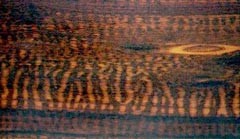
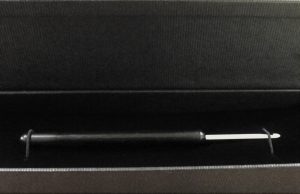
bone
These Crochet hooks are made of bones as hundreds of years ago. The bones can be obtained from Argentinean cattle. This material is thoroughly degreased and bleached. Therefore they lose their yellow tinge and get a shiny white. Because the bones have a marrow inside, we can only use the bone walls. Bone is extremely hard and heavy with a specific weight of 2. The surface finish is fine-pored and can be polished extremely smooth. Animal bones, wood and stone are among the oldest materials which the mankind used for tools like needles. Plastic and metal replaced the bones. Mainly buttons, pearls, ornaments, hairpins, combs, and handles are made of bones in the present. The dimensions of the bones are limited in diameter and length. That is why we cannot produce circular needles or double point needles. The greatest diameter in our range is 4.0 mm.
© 2024 - All rights reserved. Designed by Holz & Stein.
